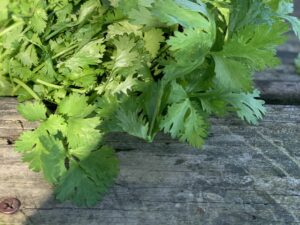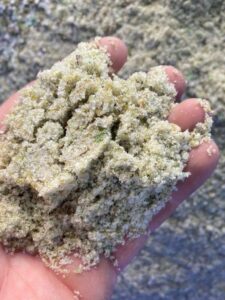Salsa, Glass Sand, And Coastal Erosion In The News
 Inspired by Glass Half Full’s research partnership with Tulane University on the use of recycled glass sand for coastal and marshland restoration, researchers at The University of Texas Rio Grande Valley Edinburg campus are collaborating with Tulane University to see how glass sand might help Texas agriculture. Glass Half Full use an Andela Pulverizer at their facility in New Orleans and provided the glass sand for the research. Professor Teresa Patricia Feria Arroyo is helming the UTRGV study, using a mixture of soil and glass sand to grow the plants used to make salsa.
Inspired by Glass Half Full’s research partnership with Tulane University on the use of recycled glass sand for coastal and marshland restoration, researchers at The University of Texas Rio Grande Valley Edinburg campus are collaborating with Tulane University to see how glass sand might help Texas agriculture. Glass Half Full use an Andela Pulverizer at their facility in New Orleans and provided the glass sand for the research. Professor Teresa Patricia Feria Arroyo is helming the UTRGV study, using a mixture of soil and glass sand to grow the plants used to make salsa.
Salsa?
Yes! Using a mixture of soil and glass sand, researchers are monitoring the growth of basic salsa ingredients, jalapeños, green peppers and cilantro. “We’re always thinking of erosion and how our soil is being damaged by this erosion, and without good soil, we cannot grow plants in summers,” Arroyo said. The team is curious as to how the glass sand and soil mixture affects the taste and vitamins of the vegetables.
Read about the project on Chip Chick Media.
If you have any questions or would like to learn more, contact us or shop our systems
Coastal Erosion
 UTRGV research labs at South Padre Island are also looking at those findings to see how glass sand can help their coast. The glass sand can be seen at a “wave tank,” a re-creation of a beach environment that simulates the effects of erosion on glass sand. The hope is to one day use recycled glass sand to mitigate erosion and increase dune restoration. UTRGV Assistant Professor Dr. Julie Vanegas is spearheading the project.
UTRGV research labs at South Padre Island are also looking at those findings to see how glass sand can help their coast. The glass sand can be seen at a “wave tank,” a re-creation of a beach environment that simulates the effects of erosion on glass sand. The hope is to one day use recycled glass sand to mitigate erosion and increase dune restoration. UTRGV Assistant Professor Dr. Julie Vanegas is spearheading the project.
Watch and read more about both projects on KRGV Channel 5 News.
To dive into other research on the subject, view this PDF about Andela Glass Sand as a Soil Amendment for Tomato Plants.


